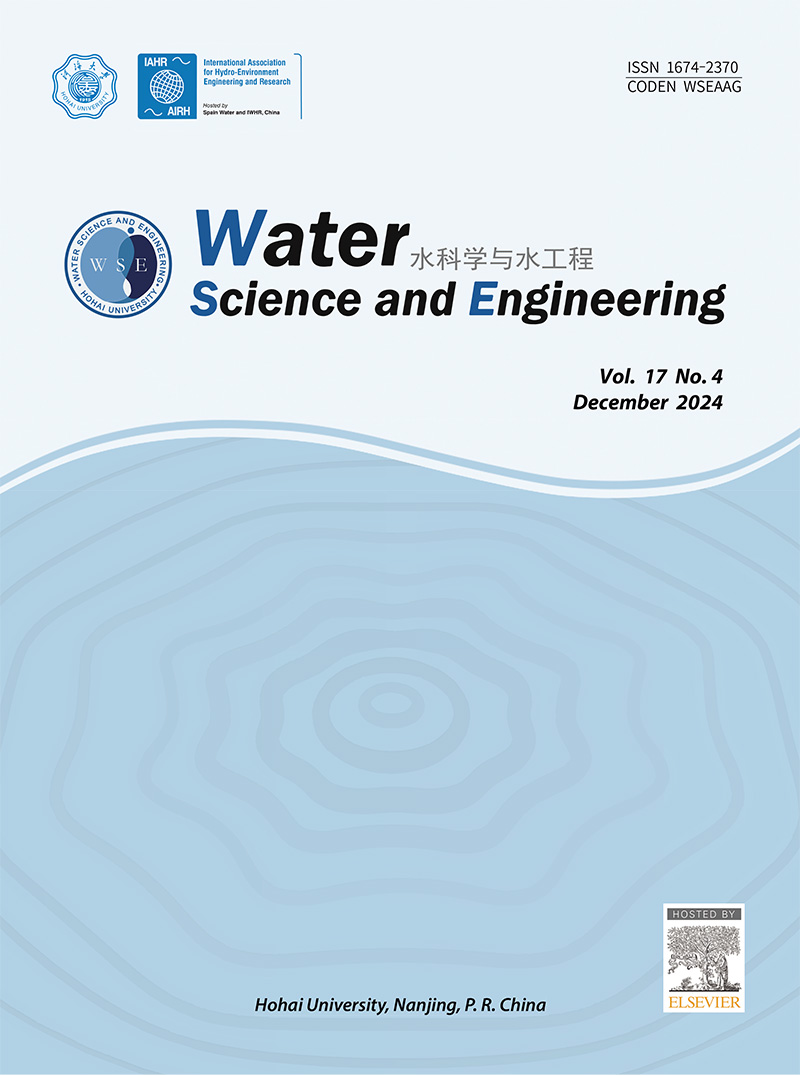Quantification of backwater effect in Jingjiang Reach due to confluence with Dongting Lake using a machine learning model
IF 4.3
Q1 WATER RESOURCES
引用次数: 0
Abstract
The backwater effect caused by tributary inflow can significantly elevate the water level profile upstream of a confluence point. However, the influence of mainstream and confluence discharges on the backwater effect in a river reach remains unclear. In this study, various hydrological data collected from the Jingjiang Reach of the Yangtze River in China were statistically analyzed to determine the backwater degree and range with three representative mainstream discharges. The results indicated that the backwater degree increased with mainstream discharge, and a positive relationship was observed between the runoff ratio and backwater degree at specific representative mainstream discharges. Following the operation of the Three Gorges Project, the backwater effect in the Jingjiang Reach diminished. For instance, mean backwater degrees for low, moderate, and high mainstream discharges were recorded as 0.83 m, 1.61 m, and 2.41 m during the period from 1990 to 2002, whereas these values decreased to 0.30 m, 0.95 m, and 2.08 m from 2009 to 2020. The backwater range extended upstream as mainstream discharge increased from 7 000 m3/s to 30 000 m3/s. Moreover, a random forest-based machine learning model was used to quantify the backwater effect with varying mainstream and confluence discharges, accounting for the impacts of mainstream discharge, confluence discharge, and channel degradation in the Jingjiang Reach. At the Jianli Hydrological Station, a decrease in mainstream discharge during flood seasons resulted in a 7%–15% increase in monthly mean backwater degree, while an increase in mainstream discharge during dry seasons led to a 1%–15% decrease in monthly mean backwater degree. Furthermore, increasing confluence discharge from Dongting Lake during June to July and September to November resulted in an 11%–42% increase in monthly mean backwater degree. Continuous channel degradation in the Jingjiang Reach contributed to a 6%–19% decrease in monthly mean backwater degree. Under the influence of these factors, the monthly mean backwater degree in 2017 varied from a decrease of 53% to an increase of 37% compared to corresponding values in 1991.
基于机器学习模型的荆江与洞庭湖汇流回水效应量化
支流入流引起的回水效应可以显著提高汇合点上游的水位剖面。但干流和汇流流量对河段回水效应的影响尚不清楚。本研究对中国长江靖江河段收集的各种水文资料进行统计分析,确定了具有代表性的三条干流的回水程度和范围。结果表明,回水程度随干流流量的增加而增加,在特定代表性干流流量下,径流比与回水程度呈正相关。三峡工程投运后,荆江河段回水效应减弱。1990 ~ 2002年低、中、高干流回水度分别为0.83 m、1.61 m和2.41 m, 2009 ~ 2020年回水度分别为0.30 m、0.95 m和2.08 m。当干流流量从7 000 m3/s增加到3 000 m3/s时,回水范围向上游延伸。基于随机森林的机器学习模型量化了荆江河段干流流量、汇流流量和河道退化对干流流量、汇流流量的影响。建利水文站汛期干流流量减少导致月平均回水度增加7% ~ 15%,枯水期干流流量增加导致月平均回水度减少1% ~ 15%。6 ~ 7月和9 ~ 11月增加洞庭湖汇流流量,月平均回水度增加11% ~ 42%。靖江河段河道持续退化导致月平均回水度下降6% ~ 19%。在这些因素的影响下,2017年的月平均回水程度与1991年的相应值相比,从下降53%到上升37%不等。
本文章由计算机程序翻译,如有差异,请以英文原文为准。
求助全文
约1分钟内获得全文
求助全文
来源期刊

Water science and engineering
WATER RESOURCES-
CiteScore
6.60
自引率
5.00%
发文量
573
审稿时长
50 weeks
期刊介绍:
Water Science and Engineering journal is an international, peer-reviewed research publication covering new concepts, theories, methods, and techniques related to water issues. The journal aims to publish research that helps advance the theoretical and practical understanding of water resources, aquatic environment, aquatic ecology, and water engineering, with emphases placed on the innovation and applicability of science and technology in large-scale hydropower project construction, large river and lake regulation, inter-basin water transfer, hydroelectric energy development, ecological restoration, the development of new materials, and sustainable utilization of water resources.
 求助内容:
求助内容: 应助结果提醒方式:
应助结果提醒方式:


